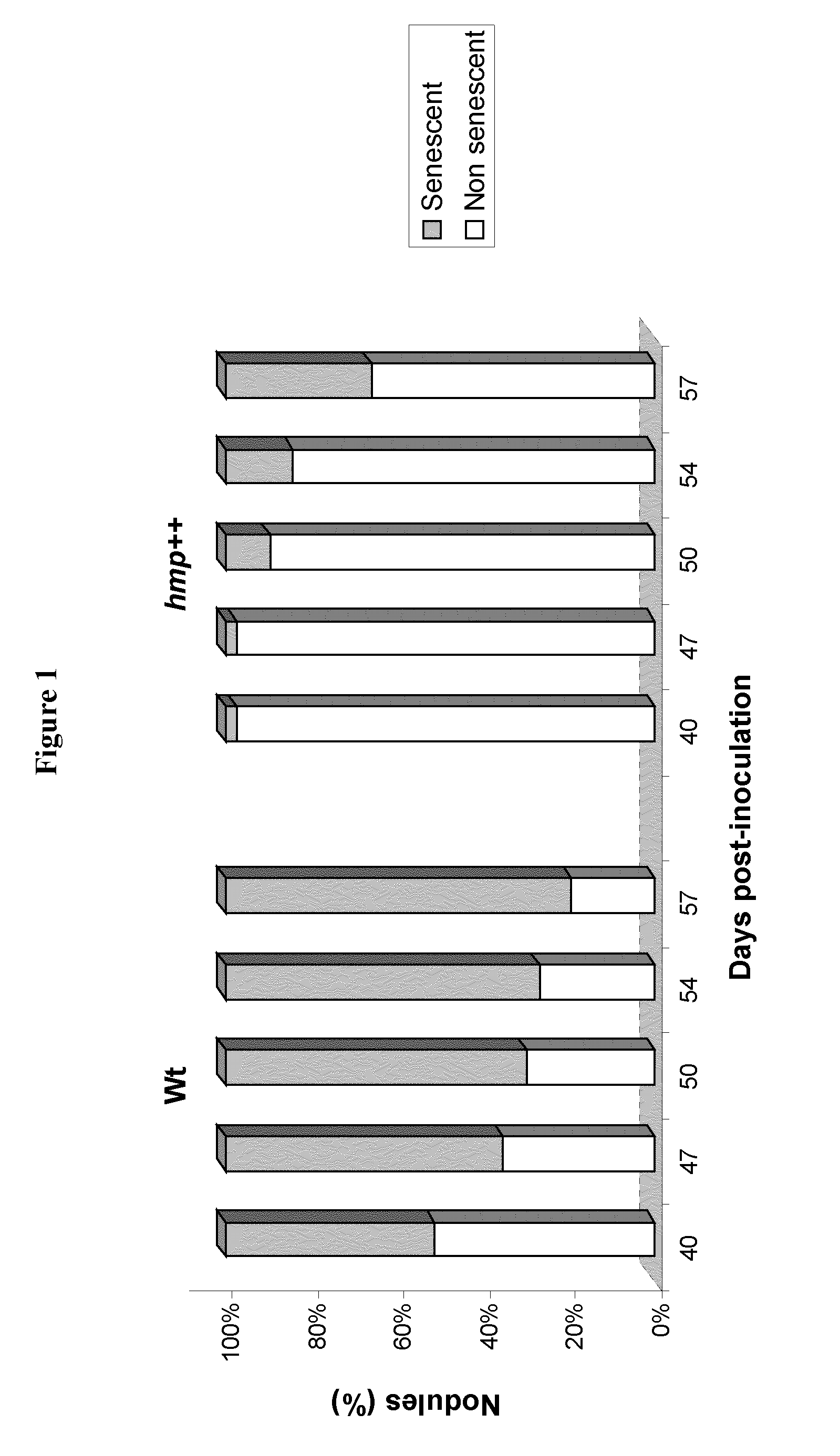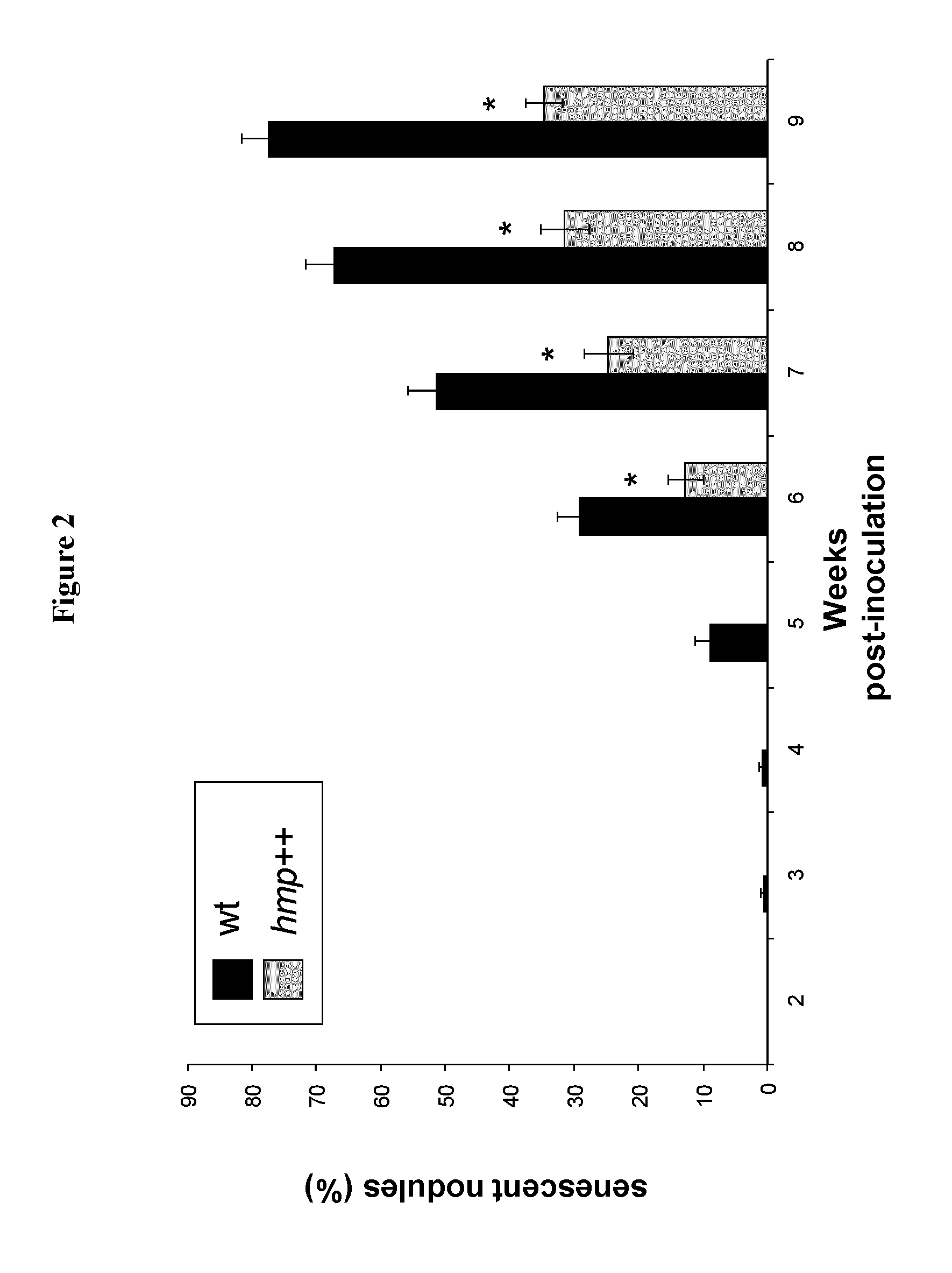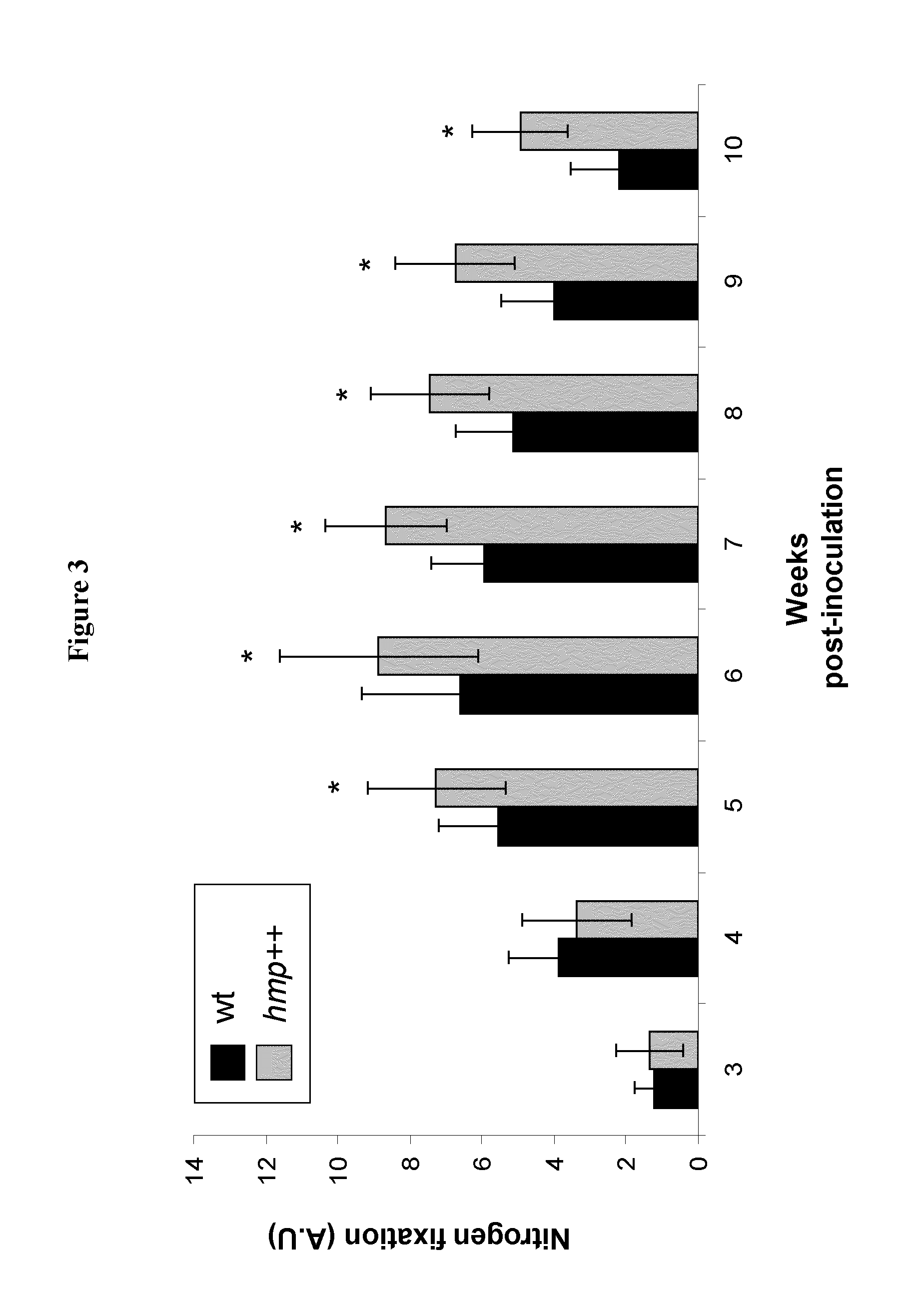Method for increasing legume productivity by cultivating a plant with an associated rhizobium overexpressing a flavohemoglobin protein
a technology of rhizobium and rhizobium, which is applied in the field of increasing legume productivity by, can solve problems such as potential toxicity, and achieve the effects of increasing respiratory activity, increasing nitrogenase activity, and increasing nitrogen conten
- Summary
- Abstract
- Description
- Claims
- Application Information
AI Technical Summary
Benefits of technology
Problems solved by technology
Method used
Image
Examples
example 1
[0060]M. truncatula plantlets grown on nitrogen-free Farhaeus solid medium were inoculated with the wild type Rm2011 S. meliloti strain (Wt) or the strain overexpressing the flavohemoglobin gene (hmp++) (Meilhoc et al. 2010). Evolution of nodule senescence was visually monitored: a nodule was judged senescent when presenting a greenish senescence zone in its proximal part. Observations made between 40 and 57 days post-inoculations (dpi) are reported as a percentage of the total number of nodules examined (81 and 41 nodules for the wt and hmp++ strains, respectively). Results of a representative experiment are shown in FIG. 1. Forty days post-inoculation (dpi), while ˜50% of the nodules induced by the Wt strain displayed a senescence zone, very little sign of senescence was visible yet for the nodules induced by the hmp++ strain. At 57 dpi, while 80% of the Wt-induced nodules were clearly senescent, only one third of the hmp++-induced nodules displayed visible signs of senescence.
[00...
example 2
[0062]To quantify the impact of delaying nodule senescence on the plants, the shoot dry weight and nitrogenase activity of M. truncatula plants inoculated with either the Wt or the hmp++ strains (using an acetylene reduction assay, ARA) were measured 46 days post-inoculation. The results of a representative experiment are shown in Table 1 (25 plants for the dry weight and 10 plants for the ARA test). Forty-six days post-inoculation, the shoot dry weight and nitrogenase activity of plants inoculated with the hmp++ strain were higher than those of plants inoculated with the Wt strain.
[0063]At later stages of the cultures (i.e. 9 weeks post-inoculation), the aerial parts of the wt-inoculated plants were more chlorotic than those of the hmp++-inoculated plants (approximately twice as much yellowish leaves).
TABLE 1Shoot dry weight and nitrogenase activity of M. truncatula plants 46 daysafter inoculation with either the wt or hmp++ S. meliloti strains.Nitrogenase activityShoot dry weight ...
example 3
[0067]Three weeks post-inoculation, M. truncatula plants inoculated with S. meliloti, either the Wt or the hmp++ strain, are submitted to a dark stress for 72 hours (‘treated’), while negative controls are not (‘non treated’).
[0068]One week after the return of plants to normal conditions, the number of senescent nodules is measured. FIG. 5 shows the mean and standard error of results from three independent experiments (total of ˜30 plants for each point); stars indicate results significantly different from the results obtained with the Wt strain (student t test, prhizobium. On the contrary, plants inoculated with a hmp++ strain of rhizobium have been more resistant to the dark stress, showing only 35% senescent nodules per plant on average, and at the maximum 50% senescent nodules.
[0069]These results show that the over-expression of the gene hmp in S. meliloti allows the obtention of nodules having a delayed senescence, both under physiological conditions (‘natural senescence’) and ...
PUM
| Property | Measurement | Unit |
|---|---|---|
| stress | aaaaa | aaaaa |
| life time | aaaaa | aaaaa |
| life-time | aaaaa | aaaaa |
Abstract
Description
Claims
Application Information
 Login to View More
Login to View More - R&D
- Intellectual Property
- Life Sciences
- Materials
- Tech Scout
- Unparalleled Data Quality
- Higher Quality Content
- 60% Fewer Hallucinations
Browse by: Latest US Patents, China's latest patents, Technical Efficacy Thesaurus, Application Domain, Technology Topic, Popular Technical Reports.
© 2025 PatSnap. All rights reserved.Legal|Privacy policy|Modern Slavery Act Transparency Statement|Sitemap|About US| Contact US: help@patsnap.com



